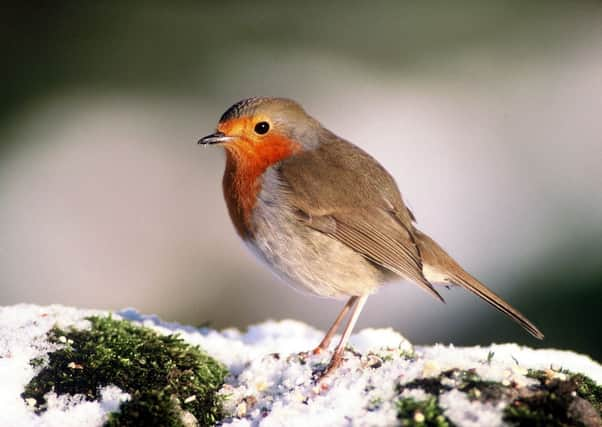Country & Coast: Robins


On Saturday one popped up to serenade my group of walkers on the Leeds-Liverpool canal towpath at Apperley Bridge, next day another accepted bits of cake while we sat beside the River Aire in Malhamdale, and this week there has been an influx of them to my sitting room.
I doubt, though, that the postman will bring a fraction of the number of robins counted in a series of huge flocks which flew off the North Sea and landed at Spurn in October 1976. In the course of a few days well over 1,000 birds were seen to make landfall.
Advertisement
Hide AdAdvertisement
Hide AdMost people are unaware that our familiar robins are well-travelled but in autumn they come here from many parts of northern Europe, and records of birds ringed at Spurn have revealed that while most disperse to the gardens of Yorkshire some head further south to the likes of Italy, Spain and the Balearic Islands.
A decade ago it came head and breast above other birds in a survey to find Yorkshire’s favourite species, and voters praised its “tyke” characteristics of tenacity and ability to thrive in harsh conditions.
In some parts of the Broad Acres older people still call it “t’ploughman’s bird” because it was a ubiquitous presence on farmland when crops were sown.
According to the RSPB, some 6.7 million pairs of robins breed annually in the UK.
Advertisement
Hide AdAdvertisement
Hide AdMales and females look identical, and young birds have no red breast but are spotted with golden brown instead.
The Anglo-Saxons knew the robin as the “rudduc” and in medieval England it was the “robeen”.
The name “robin” dates back only to 1952, when the British Ornithologists Union - the main body governing the science and naming of birds in Britain - got round to agreeing an official change from the popular Victorian name of “robin redbreast.”
It was the Victorians who invented Christmas as we know it, and adopted the bird as its symbol.
Advertisement
Hide AdAdvertisement
Hide AdAccording to Francesca Greenoak’s excellent ‘British Birds, Their Folklore, Names and Literature’, “The first postmen, whose uniform included a bright vermilion waistcoat, were known as “robins” and this is one of the reasons why robins are not only featured on Christmas cards but often shown with a letter in their beak, actually delivering mail.”
There is no mention of robins in the Bible, and the bird is not found in the Holy Land despite there being a legend that the robin’s red breast came from the blood of Christ when it tried to remove the crown of thorns at the crucifixion.
Although they are much loved in the UK, on the Continent robins are caught in traps, fed on millet until plump, then drowned in brandy and cooked in their own fat.
Charles Waterton, the Wakefield naturalist who is credited with establishing Britain’s first nature reserve at Walton Hall, visited Rome in the 1820s and to his horror found more than 50 dead robins for sale on a market stall. Incredulously, he asked if people really did eat them.
“Yes,” the stallholder replied.
“And if you will take a dozen of them home for your dinner today you will come back for two dozen tomorrow.”
Waterton, of course, did no such thing.